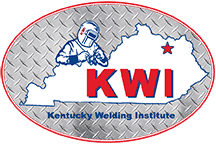How Rigging & Safety Certifications Benefit Aspiring Pipe Welders
In today’s fast-paced, high-demand welding industry, pipe welders stand at the forefront of critical infrastructure development—from pipelines and refineries to shipyards and construction sites. With skilled labor shortages and increasing employer expectations, certification and safety training are no longer optional—they’re essential. Among the most impactful tools for career-ready welders are rigging and safety certifications, which provide both credibility and confidence in real-world scenarios.
For aspiring pipe welders training at institutions like Kentucky Welding Institute (KWI), these certifications are more than just add-ons—they are integral parts of a career-focused education that bridges the gap between technical learning and job site performance.
The Increasing Demand for Certified Pipe Welders
The demand for certified pipe welders continues to rise across sectors such as oil and gas, construction, power plants, and manufacturing. Employers are no longer satisfied with welders who know how to strike an arc—they want professionals who can work safely, understand rigging principles, and handle high-pressure environments. According to recent labor statistics, welders with multiple certifications, including rigging and OSHA safety credentials, are more likely to be hired, promoted, and trusted on-site.
This is where a comprehensive welding education, like the one offered at Kentucky Welding Institute, proves its value. KWI understands industry expectations and builds its training around real-world needs, offering students not just welding skills but a total professional package.
What Is Rigging and Why It Matters to Pipe Welders
Rigging refers to the process of safely lifting, moving, and positioning heavy loads—often using chains, ropes, slings, hoists, and cranes. Pipe welders frequently operate in environments where massive sections of pipe and structural steel must be maneuvered into position for precise welding.
Key Reasons Rigging Matters for Pipe Welders:
- Job Site Efficiency: Certified rigging knowledge allows welders to assist or oversee load handling without delays or hazards.
- Team Integration: Welders who understand rigging procedures can work effectively with crane operators, fitters, and supervisors.
- Risk Reduction: Mismanaged loads can cause severe injuries, property damage, and job site shutdowns. Certification helps mitigate these risks.
- Increased Employability: Certified pipe welders who can rig safely are more attractive to contractors handling large-scale industrial projects.
At KWI, students earn a rigging certification through the NCCCO (National Commission for the Certification of Crane Operators), ensuring they’re recognized across the country for their ability to handle heavy materials safely and efficiently.
Why Safety Certifications Are a Game-Changer for Pipe Welders
Pipe welding often involves elevated work areas, confined spaces, hazardous materials, and high temperatures. This means safety isn’t just a rule—it’s a lifestyle. Employers need workers who are not just skilled but OSHA-competent and situationally aware at all times.
Kentucky Welding Institute provides OSHA 10 and OSHA 30 safety certifications as part of its core training programs. These credentials arm students with knowledge of hazard recognition, safe work practices, and compliance with federal regulations—skills that are essential for longevity and advancement in the field.
Benefits of Safety Certifications for Aspiring Pipe Welders:
- Confidence Under Pressure: Certified welders know how to identify and respond to potential hazards, giving them a mental edge in complex environments.
- Faster Onboarding: Safety-certified welders require less supervision, making them job-ready from day one.
- Compliance with Industry Standards: Many worksites won’t even allow welders on-site without proper safety training.
- Better Pay & Advancement Opportunities: Welders with OSHA training are often eligible for supervisory roles or higher-paying positions that demand accountability.
Bridging the Gap Between Training and Industry Demands
One of the key differentiators at Kentucky Welding Institute (KWI) is its direct alignment with industry feedback. Unlike traditional vocational programs that focus solely on technical skills, KWI designs its curriculum in collaboration with general foremen, inspectors, and field superintendents—the very professionals who hire welders.
By incorporating rigging and safety certifications into their programs, KWI prepares aspiring pipe welders to meet job site demands without the typical “learning curve” that delays many new hires. Students graduate ready to:
- Perform secure welds in pipe and structural steel applications
- Assist with or lead rigging operations
- Navigate job site hazards with OSHA-verified competence
- Show up to interviews and job sites with credentials in-hand
This kind of preparation accelerates the transition from classroom to career.
How Certifications Translate Into Real-World Pipe Welding Scenarios
Example 1: Shutdown & Turnaround Projects
Pipe welders often work during plant shutdowns, where downtime is costly, and every second counts. A welder who can jump into rigging tasks or handle safety checks without waiting for additional crews becomes a critical asset.
Example 2: Pipeline Construction
Laying pipeline involves precise pipe fitting, welding, and movement of large sections over varied terrain. A pipe welder trained in both rigging and safety brings value not just in skill but in leadership and problem-solving.
Example 3: Structural Welding on Elevated Platforms
Welding on scaffolds or elevated positions requires knowledge of fall protection and structural load-bearing risks. OSHA 30 certification ensures welders understand these complexities and can perform without putting others in danger.
These real-world examples show why employers view dual-certified welders as indispensable.
Building Trust and Professionalism Through Certifications
Beyond the technical advantages, certifications foster something equally vital: trust. In high-risk industries, employers, coworkers, and supervisors need to trust that every welder knows their role, respects the rules, and contributes to a safe, efficient workplace.
At KWI, students are trained not only to weld but to think, plan, and act like professionals. Certifications validate that mindset and provide external proof of internal discipline.
The Role of a Quality Institute in Your Certification Journey
Not all welding schools offer the same value. Kentucky Welding Institute stands out because of its:
- ACCET accreditation, ensuring high-quality, standards-driven education
- AWS ATF certification, aligning with American Welding Society testing criteria
- Integrated rigging and safety certifications, included as part of the core program
- Hands-on training with real-world equipment, such as TIG rigs, heavy-duty hoods, and field tools
The goal at KWI isn’t to just teach welding—it’s to build complete professionals who can step onto job sites and earn respect immediately.
Final Thoughts: Certifications as the Foundation of Career Success
For aspiring pipe welders, technical ability is just one piece of the puzzle. Today’s job sites demand professionals who are safe, certified, and multi-capable. Rigging and safety certifications aren’t just resume fillers—they’re career accelerators that open doors, increase earning potential, and ensure long-term stability in a competitive trade.
Institutions like Kentucky Welding Institute are leading the charge by making these certifications accessible, practical, and integral to every student’s journey. Whether you’re just starting your training or preparing to enter the field, investing in rigging and safety certifications will set you apart and position you for lasting success.
Interested in becoming a certified, job-ready pipe welder? Explore the comprehensive programs at Kentucky Welding Institute (KWI) and start building a career that’s safe, skilled, and in demand.
- How Rigging & Safety Certifications Help Pipe Welders Succeed
- Explore how rigging and safety certifications enhance career growth, job readiness, and success for aspiring pipe welders in today’s competitive welding industry.
- certified pipe welder, pipe welding,
Related posts:
 Get Instant Last Minute Assignment Help in Australia by India Assignment Help
Get Instant Last Minute Assignment Help in Australia by India Assignment Help
 AI and Job Security: Discover Which Tech Roles Are Truly Safe in 2025
AI and Job Security: Discover Which Tech Roles Are Truly Safe in 2025
 Defence Entrance Exam Coaching in Maharashtra – Your Path to a Glorious Career
Defence Entrance Exam Coaching in Maharashtra – Your Path to a Glorious Career
 How to Become a Certified Cybersecurity Expert – Training Options in Chandigarh
How to Become a Certified Cybersecurity Expert – Training Options in Chandigarh
 From Beginner to Developer: How Coding Bootcamps Prepare You for Real Jobs
From Beginner to Developer: How Coding Bootcamps Prepare You for Real Jobs
 Basic knowledge of trading helps you start your journey easily
Basic knowledge of trading helps you start your journey easily
 Top-Rated Finance Assignment Help Services in the USA – Your Guide to Expert Solutions
Top-Rated Finance Assignment Help Services in the USA – Your Guide to Expert Solutions
 Top 10 Reasons to Enroll in a Professional Makeup Course Today
Top 10 Reasons to Enroll in a Professional Makeup Course Today







